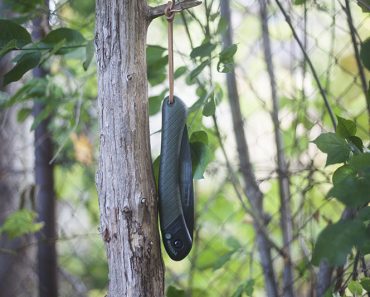Physical activity has myriad benefits for individuals of all ages. It can boost your mood, help you think more clearly and improve your overall health. Physical activity also strengthens your muscles and bones and improves your ability to perform tasks and survive an emergency.
How do you prevent and deal with injuries you experience during fitness? Here are some common injuries from physical activity and tips to avoid them.
Common Injuries From Physical Activity
Survival fitness is essential and can save your life, but there are precautions older survivalists should take to reduce the risk of harm. Here are some common injuries you might experience during physical activity.
Muscle Sprains
You can strain or pull a muscle by overstretching. This is very common and can occur from fatigue, overconditioning or lack of warming up before physical activity. Your lower back, hamstring, shoulder and neck are the most common areas to strain during exercise. A sprain occurs when you tear or overstretch ligaments, which help stabilize your limbs. It’s common during sports or workouts to roll or sprain your ankle.
Knee Pain
It’s very common to experience knee and joint pain during physical activity as you age. Your knee has many components that can become damaged, like tendons, muscles and ligaments. Knee strength decreases in the flexors and extensors by 2.5% yearly in older adults aged 65-75. You use your knee in almost every form of physical activity, from walking to running to jumping. Common causes of knee pain are runner’s knee, osteoarthritis, bursitis, and ligament or cartilage tears.
Heart Attack
Physical activity typically lowers your risk of heart disease or stroke, but high-intensity workouts or improper warmups before exercise can contribute to heart conditions. High blood pressure can lead to a heart attack or stroke during physical activity. Training is fabulous for your cardiac health if you take the necessary precautions. Strenuous exercise can increase the risk of a heart attack if you have a cardiac condition or overexert yourself.
Falling Down
Falling is one of the most common causes of injury in older people, especially those over 65. Older survivalists are more likely to lose their balance or push themselves too hard during workouts. However, consistent physical activity improves strength, resilience and balance, reducing fall-related injuries. The key is taking it slow and building up your workout tolerance. Without first building up your strength, you won’t be good at survival tactics.
Tips to Prevent Injury During Workouts
Physical activity can be dangerous if you don’t prepare, and injuries are common when you begin to exercise. Older survivalists should emphasize preventing injury since they are often in the woods or a bunker where cell service is sparse or doctors aren’t available. Here are some simple measures to avoid getting hurt during physical activity.
1. Get Routine Physicals
Annual physicals can help you stay on track with your health. You want to ensure your body can handle the stress exercise places on your joints and the rest of your body. Tests can determine your fitness level and what activities are safe to perform.
Ensure you take them to discover the limitations of your heart. A stress test on the treadmill can take as little as six minutes to complete and is worth the effort. If you know what your body can handle, you are less likely to overexert yourself, which is ideal if you are alone in the woods. You might not be able to call a doctor in an emergency. A routine physical is vital to your safety to minimize your chances of injury and ensure you can perform survival tactics.
2. Wear Workout Clothing
Proper workout clothing can help you safely exercise and prevent injuries. Ensure you wear the correct type for your sport or physical activity. For example, you’ll want to purchase running shoes for jogging and a bike helmet for riding a bicycle, not a skateboard.
Workout clothing can protect against strain, impact and even overheating. Compression clothing helps regulate blood flow and improve circulation. Items with compression capabilities also improve oxygen levels to decrease lactic acid buildup during exercise and increase endurance. Lactic acid can make you sore and stiff, and low oxygen levels contribute to buildup.
3. Stay Hydrated
Staying hydrated is arguably the most essential prevention method for injury. Dehydration can cause heat stroke, dizziness, fatigue and heat exhaustion and can be a gateway to many other injuries. Ensure you drink water to prevent these issues from happening. Sports drinks are great for hydration, but be careful about sugar intake. However, they provide the electrolytes your body needs.
Take sips of water during your workout to fuel your body, and try to drink at least 17 ounces a few hours beforehand. Physical activity induces sweat, and you must ensure you are replenishing the hydration your body is losing. Maintaining proper hydration levels can prevent sore muscles and speed up your recovery time from your workouts. It also reduces muscle fatigue, which can also prevent injuries. Ensure you have enough water, whether in the woods or a bunker. A purifier can help you clean water from rivers or lakes so it’s safe to drink.
4. Warm up Properly
Jumping into an exercise routine without warming up invites injury. Your body needs a proper warmup and cooldown before every type of physical activity. Accidents happen to everyone, but being older increases your risk, so prevention is important. Your muscles are naturally tight before your heart rate increases during fitness.
Warming up increases your range of motion, raises blood temperature, boosts body and muscle temperature, and causes blood vessels to dilate. This prepares your body for strenuous activity and reduces the risk of injury. Take the necessary measures to stretch, walk, and focus on preparing for your workout physically and mentally. Warm up for at least five to 10 minutes before working out.
5. Choose the Right Exercise
Begin with low-intensity workouts like walking on a treadmill or around your block. Ease into your exercise routine and gradually build up the duration, frequency and intensity. Beginning an activity your body isn’t ready for can result in injury. Remember, you must walk before you can run. When you gather supplies, you start with the basics — the same concept applies to choosing the right exercise. Begin with what you know your body can handle and then work your way up from there.
Moderate exercise has myriad benefits, like decreasing stress hormones and building your immune system. Monitor your physiological response to workouts between routine physicals to know where your limits are and how much you should do. Take lessons or hire a personal trainer to ensure you use equipment properly. Taking the time to learn the correct way to do a workout or perform a task can reduce your risk of injury.
6. Eat a Balanced Diet
Nutritious foods provide your body with the fuel it needs to survive and maintain the proper nutrients. Ensure you eat a balanced diet to prepare your body for physical activity. Not getting enough vitamins, minerals and energy can affect muscle function.
A balanced diet ensures ligaments and tendons are strong, which helps your muscles function properly. Carb and protein snacks can replenish your energy. Good fats can prevent muscle inflammation by creating healthy cell membranes. You need enough calories and carbohydrates to fuel your body before and after a workout. Survivalists might want to mirror what they’d eat in a post-SHTF world.
For example, fruits that are high in carbohydrates are excellent to consume before working out. Whole wheat toast and hard-boiled eggs are also fantastic to eat before a workout. Ensure you keep healthy snacks on hand to regulate your blood sugar while in the woods or a bunker. A backpack or utility cart full of nonperishable food items is always a great resource to have as a survivalist.
7. Limit Yourself
It is crucial to listen to your body and not overdo it when working out. Don’t push yourself to the point where you feel pain. Pain is unnecessary during a workout, contrary to popular belief. Your body needs rest, especially when performing physical activities.
If something hurts, stop exercising. Pay attention to your pain and evaluate the movement that caused it. Keep a customized first-aid kit with you that provides 30 days’ worth of medications like painkillers for these types of situations. A flashlight or headlamp is also essential to your survivalist’s kit, as it can reduce your risk of getting hurt in the dark.
If possible, call your doctor if you can’t identify what caused the pain and rest doesn’t help. Pushing through your pain risks injury or worsens an existing one and isn’t worth it. The answer could be an easy fix, like an adjustment to your workout or a different approach to fitness. It’s better to be safe than sorry. Be kind to your body, listen to what it’s telling you and ensure you rest when feeling under the weather.
Make the Right Moves to Stay Healthy and Fit
Ensure you follow these steps to prevent harm, whether walking in the mornings with a friend or starting a rigorous workout routine. Understanding common injuries and ways to avoid them is essential to prevent pain and misery.




![S. L.L.S. – The Most Important Acronym For Your Life Today! [PODCAST] S. L.L.S. – The Most Important Acronym For Your Life Today! [PODCAST]](https://survivalcove.com/wp-content/uploads/2021/09/The-survival-show-podcast-banner-370x297.jpg)























